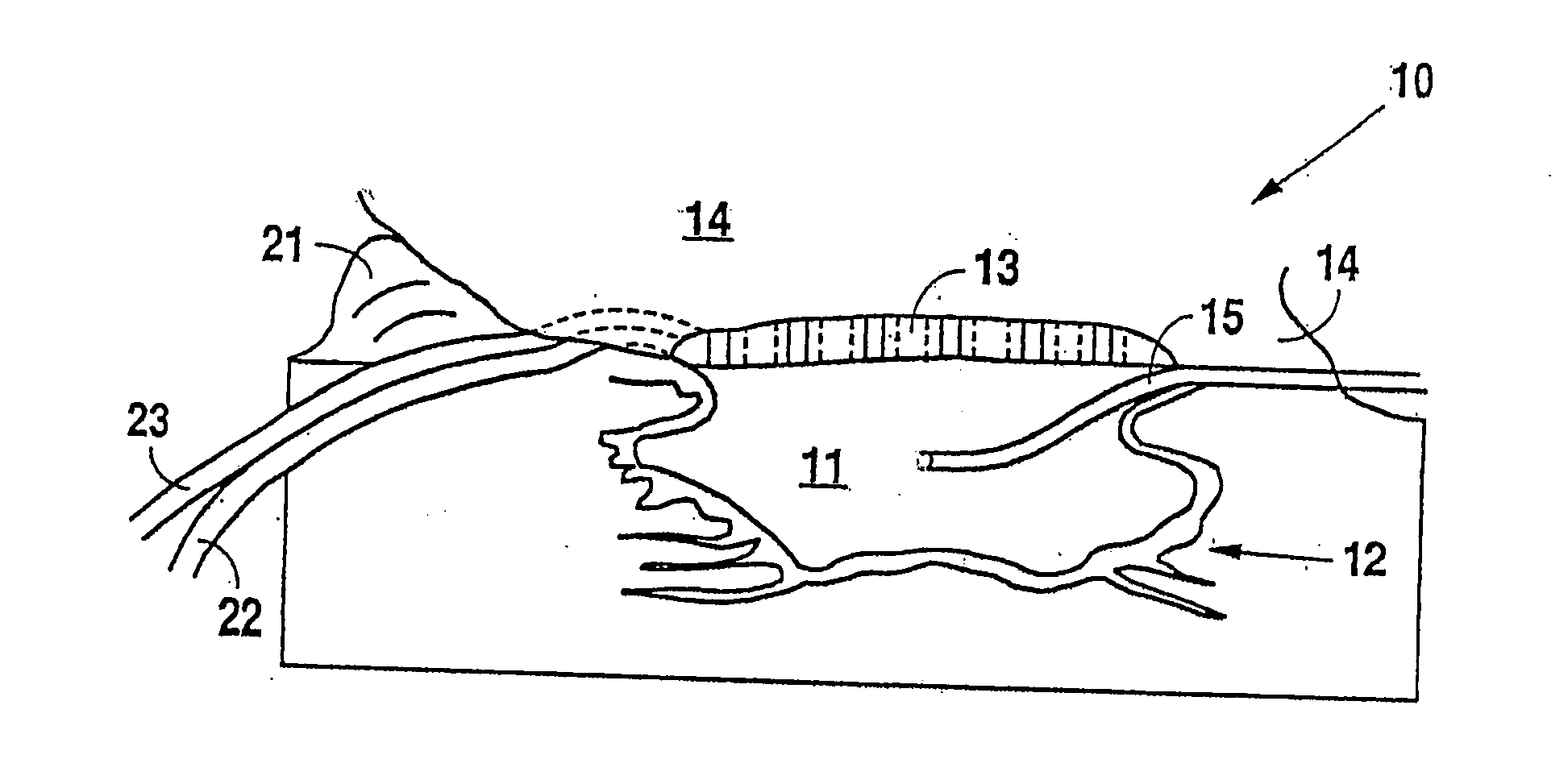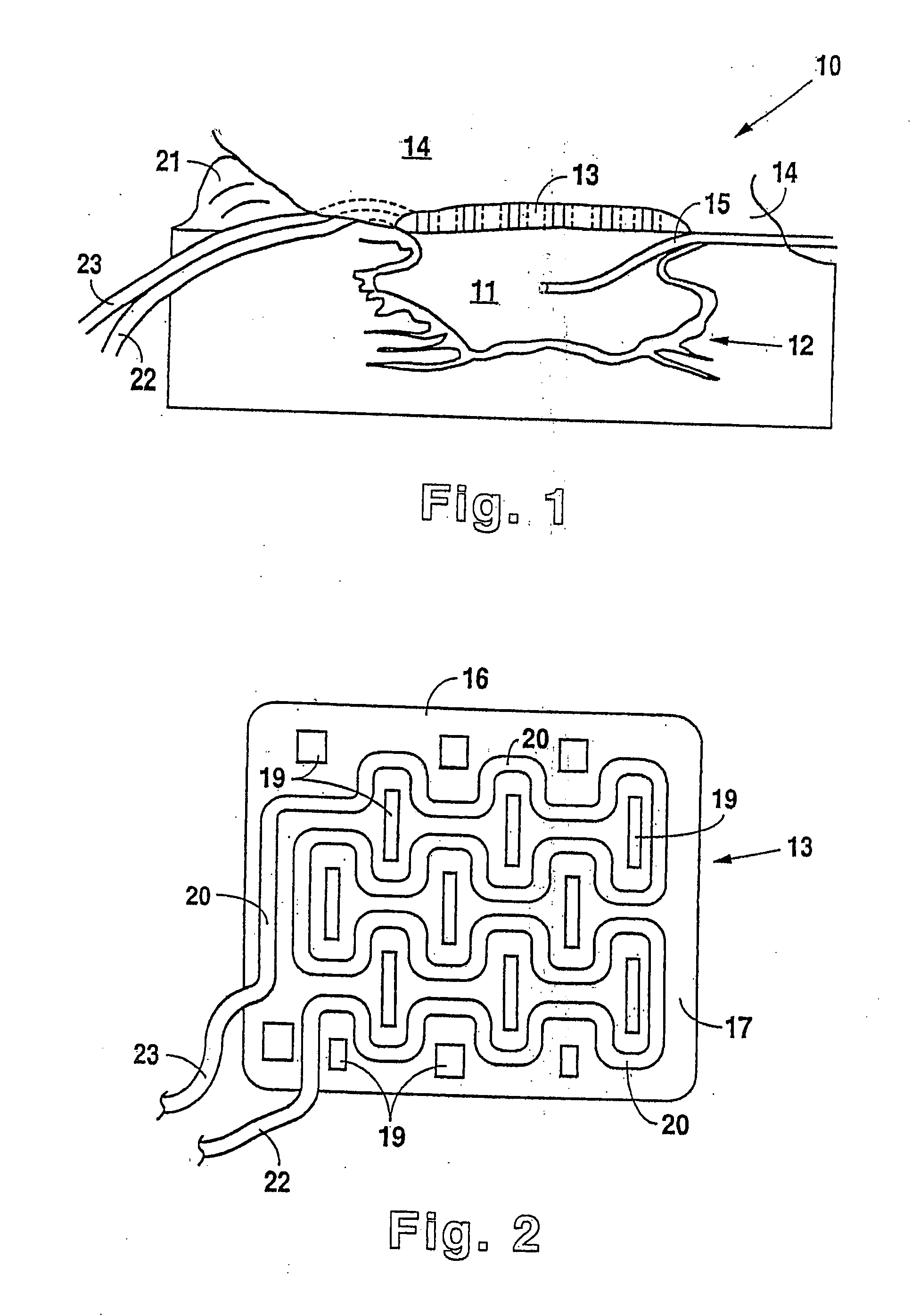Negative pressure treatment system with heating and cooling provision
a treatment system and negative pressure technology, applied in the field of wound healing, can solve the problems of reducing oxygen and nutrients, affecting the healing process, and reducing the ability to fight effectively, so as to prevent vacuum leakage and reduce the loss of vacuum at the wound si
- Summary
- Abstract
- Description
- Claims
- Application Information
AI Technical Summary
Benefits of technology
Problems solved by technology
Method used
Image
Examples
Embodiment Construction
[0021] Although those of ordinary skill in the art will readily recognize many alternative embodiments, especially in light of the illustrations provided herein, this detailed description is exemplary of the preferred embodiment of the present invention—a vacuum assisted closure system with heating and cooling provision, the scope of which is limited only by the claims appended hereto.
[0022] Referring now to the figures, the present invention 10 is shown to generally comprise a foam pad 11 for insertion substantially into a wound site 12, a heating and cooling pad 13 for application over the wound site 12 and a wound drape 14 for sealing enclosure of the foam pad 11 and the heating and cooling pad 13 at the wound site 12. According to the invention, the foam pad 11 is placed in fluid communication with a vacuum source for promotion of fluid drainage while warm or cool fluid is circulated through the heating and cooling pad 13 for the controlled acceleration or retardation, respecti...
PUM
 Login to View More
Login to View More Abstract
Description
Claims
Application Information
 Login to View More
Login to View More - R&D
- Intellectual Property
- Life Sciences
- Materials
- Tech Scout
- Unparalleled Data Quality
- Higher Quality Content
- 60% Fewer Hallucinations
Browse by: Latest US Patents, China's latest patents, Technical Efficacy Thesaurus, Application Domain, Technology Topic, Popular Technical Reports.
© 2025 PatSnap. All rights reserved.Legal|Privacy policy|Modern Slavery Act Transparency Statement|Sitemap|About US| Contact US: help@patsnap.com


